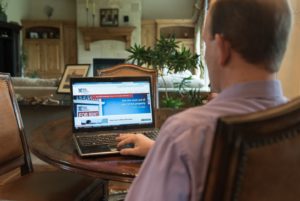Retirement Income: Have You Considered a Rental Property?
Most Americans find saving for retirement income difficult. Today, the key ways this is done is through Individual Retirement Accounts (IRA’s) and 401K plans. These are great savings vehicles because the money saved is often deducted from your taxable income, and interest accrues without taxation until the funds are withdrawn.
There is an additional retirement income investment opportunity most people never consider: buying a rental property. If one buys the right property and manages it well, it can easily become an additional retirement nest egg. By diversifying investments, one can also mitigate risks from stock market volatility with a more balanced portfolio.
Generally, an investment property such as a three-bedroom single family residence requires a 20% down payment. That’s the biggest hurdle to be overcome – saving for the down payment. Over time, a rental property can basically pay for itself using tenant rental payments to cover the mortgage and other costs. At the end of a 30-year mortgage, much of the rental income becomes an annuity to the owner, and the value of the property will have risen dramatically.
Following is an example to demonstrate the point. This example ignores the tax advantages of depreciation and operating cost deductions for the sake of simplicity.
Assume an investor buys a 3 bedroom, 2.5 bath home in average condition here in Portland, OR in the St. Johns neighborhood. Assume also this home has a sales price of $450,000 and the buyer puts 20% down. According to nearby rent comps from the previous 12 months, one could anticipate renting this home somewhere around $2,400 per month. Add average maintenance costs, insurance, property management fees and property tax expenses, and this investment would lose just $230 per month for the first year. With rental prices rising, the loss would become a profit in just a few years. (All estimates based on March 2017 online data sources.)
Assumed purchase price: $450,000
Down payment @ 20% : $90,000
Assumed rent for 3BR single family residence (Source: Rentometer): $2,400
Monthly mortgage cost @3.75% interest : $1,667
Monthly maintenance & repairs @ 3% of monthly rent revenue: $72
Estimated Insurance : $120
Management fees (Source: RPM estimate of average property management fees): $216
Assumed Property taxes @1.25 of home value: $469
Monthly estimated cost: $2,544
Monthly net loss/out-of-pocket expense: ($144)
The first year’s annual out-of-pocket expense would be $1,728 , yet the average growth in the value of the house will grow. By estimating a conservative appreciation rate of 3.4% per year, the value of the investment on just appreciation in year one would be $15,300. Over time, rents will increase, so each year the out-of-pocket expense would drop until your investment becomes cash flow positive. Consider also that each month your equity will build as each month the mortgage payment includes a reduction in the amount of debt held.
When the mortgage is paid off in 30 years, the net monthly retirement income would increase by the mortgage amount of $1,667. Since rental rate growth keeps pace with inflation, the actual monthly income will likely be substantially more.
In addition to the cash flow from the property after 30 years, the property value will increase over time. Assuming an average 3.4% property value increase during the next thirty years, the $450,000 house value will become $1,226,955.
If converted to an annuity with a 2% return above inflation, it would produce $$4816.28 in monthly retirement income.
As this example demonstrates, a rental property investment can basically pay for itself after the initial down payment is made, and becomes a source of on-going retirement income thereafter. Since the actual cash investment was $90,000, the return on invested cash is sevenfold. If sold in retirement, the property would yield a payout of over a million dollars.
Not many IRA’s or 401K’s can be expected to deliver that type of return. The main reason is that 80% of the initial property cost is paid by a bank via the mortgage process. The loan funds are being leveraged. Investors receive the full benefit of housing price appreciation, despite only putting 20% down.
The biggest complaints property investors have about rental properties is the time and hassles they can present. It doesn’t have to be that way. Call us today at 503-224-3002 and find out how we can take the hassle out of owning rental properties and help you achieve the lifestyle you deserve We find and screen tenants, collect rents, manage maintenance, and handle the bookeeping. This type of investment can be as easy and carefree as an IRA or 401K. And the benefits include excellent returns, reduced risk from a balanced portfolio of investments, and tax benefits.
We are pledged to the letter and spirit of U.S. policy for the achievement of equal housing opportunity throughout the Nation. See Equal Housing Opportunity Statement for more information.




